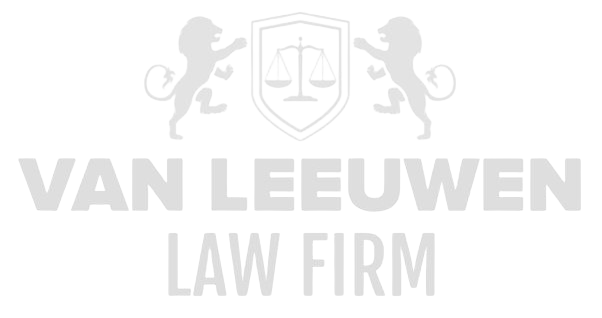The current global regulatory architecture is characterized by an increasingly intricate and less coherent constellation of sectoral, national and supranational normative frameworks. This normative proliferation has created a legal and operational landscape in which enterprises face overlapping obligations, divergent supervisory cultures and an accelerating stream of soft-law instruments that increasingly function as de facto standards. Within this fragmented regulatory environment, legal certainty declines, compliance risks rise exponentially and strategic considerations relating to governance, data flows and operational structures become more critical than ever. The complexity is further amplified by the fact that regulatory authorities operate on the basis of fundamentally different policy philosophies, making interpretative friction and legal inconsistency not exceptional phenomena but inherent features of the system.
At the same time, the shift toward increased sectoral specialization—ranging from privacy and cybersecurity to financial stability, competition law and consumer protection—results in enterprises confronting a multidimensional supervisory reality. This reality requires not only technical understanding of standalone frameworks but also deep insight into how these frameworks may influence, reinforce or undermine one another. Discrepancies between national implementations of global standards, combined with the rise of extraterritorial powers, heighten the risk of parallel investigations and cumulative sanctions. In this context, the ability to identify risks early, manage regulatory pressure proportionately and adapt governance models to a decentralized order becomes an essential competitive factor.
Proliferation of Sector-Specific and National Regulation
The acceleration of national legislative initiatives is driven by geopolitical tensions, rapid digitalization and increasing public pressure on policymakers to regulate technological developments. As a result, an increasingly detailed web of requirements has emerged, ranging from cybersecurity obligations and data localization mandates to sector-specific conduct standards. The fragmentation that follows makes it particularly challenging to ensure consistent interpretation, given that legal definitions, scoping principles and extraterritorial reach differ substantially. Consequently, enterprises face a regulatory environment in which a uniform policy approach is achievable only in theory, while actual compliance requires jurisdiction-specific adaptation.
This proliferation encompasses not only the volume of regulation but also the intensity of supervision and the level of granularity in technical norms. Regimes governing digital markets, artificial intelligence and critical infrastructure introduce new obligations accompanied by far-reaching reporting and audit requirements. This creates a situation in which compliance can no longer be seen as a static legal exercise but as an ongoing operational discipline requiring continuous monitoring and adjustment. The interdependence of various sectoral rules further reinforces the need to integrate legal and technical competencies seamlessly.
Finally, the rise of extraterritorial enforcement powers produces an increasingly complex web in which national authorities exert influence beyond their territorial borders. This results in a level of regulatory overlap that has a significant impact on operational flexibility, risk exposure and strategic planning. Enterprises must therefore anticipate potential conflicts between regulatory regimes and develop measures that enable simultaneous compliance with divergent legal obligations without incurring commercial disadvantage.
Difficulties in Implementing Consistent Global Compliance
Achieving a globally consistent compliance model is significantly hampered by the substantial differences between regulatory frameworks in terms of definitions, proportionality principles and governance expectations. This makes it extremely challenging for enterprises to design uniform processes that also meet local requirements. Moreover, the continuous evolution of regulatory obligations creates a dynamic environment in which established structures become outdated rapidly, necessitating flexible mechanisms capable of integrating new obligations without undermining existing processes.
Internationally operating organizations encounter diverse enforcement practices, varying regulatory capacities and differing risk perceptions across supervisory bodies. These differences lead to interpretative inconsistency, whereby identical operational activities may be deemed compliant in one jurisdiction but considered risky or even inadmissible in another. Such inconsistency undermines legal certainty and complicates the task of aligning global standards with local nuance.
Consistent global compliance requires a comprehensive internal infrastructure that combines legal and technical expertise. This encompasses not only familiarity with national legal frameworks but also an understanding of supervisory operations, audit methodologies and expectations relating to reporting, governance and risk management. Establishing such infrastructure demands substantial investment and may create operational inefficiencies when resources must be allocated across geographically diverse regimes with varying degrees of regulatory maturity.
Interaction and Conflicts Between Privacy, Competition, Financial and Cyber Regulations
Privacy and data protection rules increasingly shape how enterprises structure, share and utilize data. These rules may conflict with competition law obligations, such as when data sharing is required for market oversight while privacy rules simultaneously impose restrictions on such transfers. This structural tension creates a complex environment in which enterprises must carefully balance the protection of personal data against obligations stemming from competition supervision.
Financial regulation introduces additional layers of stringent requirements relating to reporting, transaction monitoring and risk management, compelling enterprises to generate and process large datasets. These datasets often fall within the scope of privacy and cybersecurity frameworks, necessitating additional safeguards. Conflicts arise when transparency and oversight obligations collide with restrictions relating to data minimization and proportionality, creating potentially incompatible requirements that are difficult to reconcile without detailed legal analysis.
Cyber regulation further adds to this complexity by introducing obligations concerning incident notifications, technical security standards and supply chain audits. These obligations may again conflict with other legal domains when, for example, a cyber incident notification may expose confidential or market-sensitive information relevant to financial or competition law contexts. The interplay between these domains therefore requires an integrated approach in which legal, technical and strategic considerations are fully aligned to address cross-regulatory obligations and conflict points.
Divergent Enforcement Cultures Among International Regulators
Regulators across the globe adopt markedly different enforcement cultures, ranging from collaborative and guidance-oriented approaches to strict, sanction-driven and adversarial models. These differences influence not only how investigations are conducted but also the expectations surrounding transparency, engagement and proportionality. Enterprises operating across jurisdictions must anticipate abrupt shifts in regulatory expectations, variable tolerance thresholds and divergent interpretations of compliance standards.
Enforcement priorities are also shaped by domestic policy objectives, public pressure and political dynamics. As a result, regulators may concentrate their efforts on sectors or issues that have particular national significance, regardless of international trends. This creates a supervisory environment in which international consistency cannot be presumed, requiring enterprises to continuously adjust their risk assessments based on local regulatory priorities.
Enforcement intensity varies significantly across sectors and regions. Some regulators emphasize prevention and cooperation, while others employ substantial sanctions to secure compliance. This variation creates a complex environment in which regulatory engagement strategies must be calibrated to the local context, taking into account culture, precedents and supervisory dynamics.
Heightened Risk of Parallel Investigations and Double Sanctions
The growing extraterritorial reach of regulatory regimes increases the likelihood that multiple regulators will initiate parallel investigations into the same facts or conduct. This heightens the risk of double sanctions, divergent interpretations of the same legal provisions and inconsistencies in evidentiary standards. Such regulatory exposure can have significant financial and reputational consequences, particularly in the absence of clear coordination mechanisms between authorities.
Parallel investigations also create substantial operational challenges, as enterprises must manage multiple information requests, audits and interviews, often following different procedures and timelines. The cumulative pressure of these processes can lead to significantly higher compliance costs and material disruption of internal operations. The absence of explicit safe harbours or clear rules on international coordination amplifies this risk and underscores the need for strategic preparedness.
An additional risk arises when regulators reach divergent conclusions based on identical facts. In one jurisdiction, conduct may be deemed compliant, while the same conduct may result in sanctions elsewhere. This inconsistency undermines legal certainty and necessitates a carefully designed governance model capable of anticipating such scenarios.
Strategic Mapping of Regulatory Hotspots
The identification of regulatory hotspots requires an in-depth analysis of geographical and sector-specific developments in which supervisory authorities direct heightened scrutiny toward particular behaviours, technologies or market dynamics. These hotspots typically emerge at the intersection of innovative business models and rapidly evolving regulatory frameworks, creating a heightened risk of unexpected enforcement actions. Mapping such high-risk zones demands a methodology that not only evaluates legal factors but also assesses technological vulnerabilities, market conduct and geopolitical tensions capable of increasing the likelihood of regulatory intervention.
A robust mapping approach must also involve continuous evaluation of the policy agendas of supranational and national regulators, including analysis of signals from public consultations, enforcement bulletins and sector-specific investigations. Such analysis enables the forecasting of future supervisory priorities and facilitates timely anticipation of emerging risks. This contributes to a more proactive posture, allowing enterprises to restructure compliance strategies before new obligations are formalised or existing standards are interpreted more stringently.
Strategically positioning governance mechanisms in areas identified as hotspots constitutes a crucial component of risk mitigation. This includes strengthening legal and technical control systems, enhancing internal documentation processes and increasing transparency in interactions with regulators. Integrating these measures into the operational architecture creates a more resilient structure that is better equipped to withstand regulatory interventions, parallel investigations and potential sanctions.
Scenario Planning for Conflicting Obligations (e.g., Data Access)
Scenario planning is a critical discipline within modern governance, particularly in a world where conflicting obligations between jurisdictions are increasingly common. In circumstances where data-access obligations collide with privacy or cyber requirements, a legal tension arises that demands forward-looking strategies addressing contradictory expectations from regulators. Such scenarios illustrate that compliance cannot be understood as a linear process but rather as a strategic exercise in which legal, technical and operational variables must be continuously balanced against one another.
An effective scenario-planning model requires deep knowledge of extraterritorial regimes, interpretative divergences and potential enforcement strategies. By modelling various hypothetical situations—ranging from cross-border data requests to sector-specific reporting obligations—enterprises can pre-assess the risks that arise when obligations come into conflict. This allows organisations to define fallback structures, escalation mechanisms and legally defensible positions that support decision-making both internally and externally.
The implementation of scenario planning further strengthens an organisation’s ability to respond adequately to regulatory escalations. When regulators simultaneously request information subject to national restrictions, it becomes essential to rely on pre-established strategies that meet core obligations while minimising the risk of sanctions. This fosters a more structured and controlled decision-making process in which legal consistency, technical feasibility and operational proportionality assume central importance.
Governance Models for Multi-Jurisdictional Oversight
The development of governance models capable of withstanding multi-jurisdictional oversight constitutes a structural challenge in the current regulatory landscape. Such a model requires a distributed yet coherent structure in which compliance, risk management and legal functions are more closely integrated than ever before. This governance architecture must be able to translate divergent standards into workable processes without generating inconsistencies across geographical entities or business units.
A robust governance model is anchored in central coordination complemented by local expertise that can interpret the nuances of regional supervisory expectations. This hybrid approach makes it possible to combine global standards with local interpretation, thereby reducing legal risk while preserving operational efficiency. The creation of uniform policy guidelines can thus be supported by an exceptions framework that accommodates the specific requirements of individual jurisdictions.
A governance system suited to multi-jurisdictional oversight must also incorporate advanced reporting and monitoring mechanisms. Through the use of integrated compliance platforms, organisations can ensure timely detection of risks while standardising audit trails and decision documentation in line with cross-border expectations. Such a structure ensures that enterprises can demonstrate that governance decisions are consistent, transparent and proportionate, even when operating across regulatory environments with divergent supervisory priorities.
The Increasing Role of Soft Law and Guidance Documents
Soft-law instruments—such as guidelines, frameworks, best-practice documents and consultation materials—are assuming an increasingly prominent role in regulatory ecosystems worldwide. Although these instruments are formally non-binding, they often function as normative reference points for regulators, industry bodies and market participants. As a result, a hybrid regulatory structure has emerged in which the boundary between binding and non-binding obligations is increasingly blurred, carrying significant implications for legal and operational strategies.
The growing emphasis on soft law has led to a more diffuse interpretation of compliance, in which expectations are inferred from policy priorities rather than derived strictly from statutory provisions. This reinforces the need for continuous monitoring of guidance publications, consultation processes and draft regulations, since such instruments provide early insight into future supervisory trajectories. Moreover, these documents frequently form the basis for national implementation choices, making cross-country divergences visible at an early stage and enabling their incorporation into risk assessments.
A further effect of the expansion of soft law is the partial displacement of the predictive value traditionally attributed to formal legal sources. Regulatory expectations shift more rapidly, requiring enterprises to reassess frequently how policy intentions translate into practical norms. By structurally integrating soft-law instruments into governance and compliance frameworks, organisations can adopt a more adaptive approach in which anticipation plays a central role and legal risks are addressed in a timely manner. This contributes to building a more resilient system that is less vulnerable to abrupt changes in supervisory priorities or new interpretations of existing rules.
Cost Management in a Fragmented Compliance Landscape
The increasing complexity of the compliance landscape inevitably leads to rising costs—both direct, in the form of legal support, audits and implementation projects, and indirect, in the form of operational delays and strategic limitations. Effective cost management therefore requires a carefully calibrated balance between risk reduction and efficiency, with investments aligned to the degree of regulatory exposure and the strategic importance of specific markets. This creates a need for strategic allocation of resources based on both legal sustainability criteria and commercial priorities.
The fragmented nature of regulation also increases the likelihood of duplicative processes and controls. When different jurisdictions impose similar but not identical requirements, organisations may unintentionally build parallel structures that are not fully integrated. This increases costs and complicates efforts to standardise processes. However, by consolidating harmonisation efforts and leveraging compliance technologies, enterprises can realise economies of scale while simultaneously enhancing transparency.
Efficient cost management also requires a layered approach in which governance models are designed so that decisions concerning prioritisation, escalation and investment levels are centrally coordinated but locally executed. Through the use of data-driven risk models and automated monitoring tools, enterprises can increase the predictability of compliance costs while responding to regulatory developments without deploying disproportionate resources. This results in a financially sustainable structure that can withstand the continuous evolution of global regulation.















